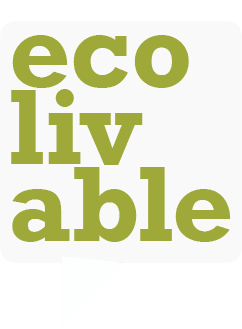Eco Living Guide.
Sustainability doesn’t have to mean raising chickens, building solar panels, or living in a yurt. The truth is, eco-living can start with small, intentional shifts in your home and lifestyle. This guide outlines seven low-effort but high-impact habits that help reduce waste, save money, and move you toward a more sustainable way of life—without overwhelming your schedule or your wallet.

1. Start a No-Waste Pantry
Skip the trend of perfectly labeled glass jars and go for function over form. Start by reusing what you have:
- Save pasta sauce jars for bulk grains.
- Use cloth produce bags for fruits and veggies.
- Ditch plastic wrap for beeswax wraps or silicone lids.
Bonus: You’ll reduce microplastic exposure and food waste simultaneously.
2. Switch to Refillable Cleaning Products
Cleaning sprays and detergents are some of the most wasteful items in our homes—packaged in single-use plastic and full of questionable chemicals.
Try:
- Refillable tablets like Blueland or Meliora.
- DIY vinegar-based cleaners with essential oils.
- Compostable scrubbers instead of plastic sponges.
You’ll reduce packaging waste and exposure to toxic ingredients.
3. Eat with the Seasons (and the Soil)
Eco-living starts on your plate.
- Shop at local farmers markets or join a CSA (Community Supported Agriculture).
- Focus on produce in season—it travels fewer miles and often requires fewer chemicals.
- Grow herbs on your windowsill. Basil, rosemary, and mint thrive indoors.
Less packaging, fewer emissions, and more flavor.
4. Buy Less, Buy Better
Instead of buying trendy eco products, try this mindset shift:
“Do I need this at all? If so, what’s the longest-lasting version of it I can afford?”
Choose items with:
- Natural or recycled materials
- Repairability and warranty
- Low-impact production
A durable steel water bottle beats 20 “eco” tumblers that crack in a year.
5. Rethink Laundry
Laundry is a quiet polluter—think microplastics, energy usage, and water waste.
Eco swaps:
- Use cold water cycles (saves ~90% of energy).
- Hang dry clothes when possible.
- Skip dryer sheets for wool balls or DIY vinegar softeners.
- Choose biodegradable, phosphate-free detergents.
6. Build a Modular Emergency Kit
Eco-preparedness is part of sustainability too. A smart kit avoids overbuying wasteful single-use items.
What to include:
- Hand-crank or solar radio
- Water purification tabs or filter straw
- Multi-use tools (instead of 10 single-purpose gadgets)
- Shelf-stable, low-waste food packs with compostable or recyclable packaging
More is not better. Modular kits let you rotate, reuse, and store efficiently.
7. Use Less Internet and Streaming
Yes, digital behavior affects the planet. Data centers burn energy at incredible rates.
Small shifts:
- Download music instead of streaming daily.
- Use low-data modes on YouTube and Netflix.
- Limit auto-play and cloud backups unless needed.
Mindful tech = less carbon in the cloud.
Final Thoughts: Make It Stick
You don’t need to be perfect—you just need to be persistent. Eco-living isn’t a destination, it’s a rhythm. Start where you are. Use what you have. Learn as you go.


